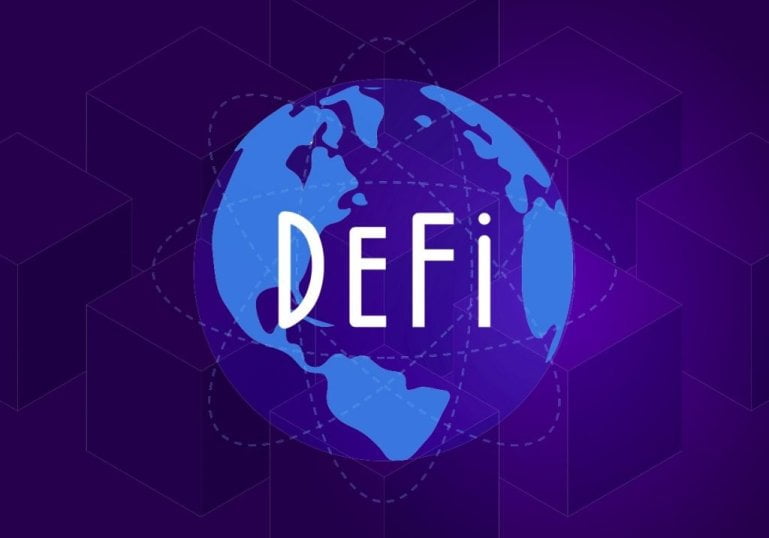In this article, we are going to explain all the terms you need to know about decentralized finance (DeFi).
DeFi Glossary
Asset
An asset is anything that has a value that belongs to a person or organization, and that can be used for debt payment, transactions, as collateral, etc, in the DeFi ecosystem we would be talking about any token/cryptocurrency that can participate in both exchanges and any other financial activity (debt payment, collateral, etc).
Synthetic asset
A synthetic asset is a financial instrument that simulates other financial instruments. In other words, the risk/reward profile of any financial instrument can be simulated using a combination of other financial instruments. Synthetic assets are composed of one or more derivatives, which are assets that are based on the value of an underlying asset.
Airdrop
An airdrop is a marketing method employed by many projects in the blockchain ecosystem (not just DeFi), in which tokens are delivered that go directly into users’ wallets for free or for a small promotional service. Its use is intended to raise awareness and increase the popularity of the token and the project it represents.
ALT (All Time Low)
The historical minimum price of any asset listed on a market.
AMM (Automated Market Maker)
Automated market makers are algorithmic agents that provide liquidity in electronic markets. They set prices for the end-user according to a predefined set of rules.
Altcoin
The term altcoins refers to all cryptocurrencies other than Bitcoin, which are included mining-based cryptocurrencies, stable coins, utility, and security tokens.
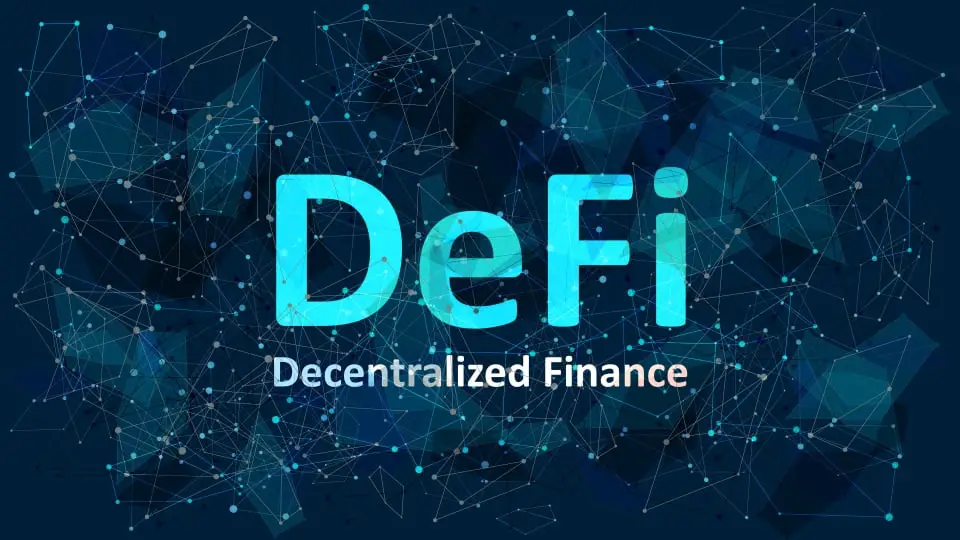
AML (Anti money-laundering)
Anti-money laundering (AML) refers to a set of laws, regulations and procedures intended to prevent a criminal from disguising illegally obtained funds as legitimate income. Although AML laws cover a relatively narrow range of criminal transactions and behavior, their implications are far-reaching.
Fundamental Analysis (FA)
Fundamental analysis is a method used to assess the intrinsic value of an asset and to analyze factors that could influence its price in the future. This type of analysis is based on the evaluation of assets based on external facts and influences, as well as financial statements and industry trends.
Technical Analysis (TA)
Technical analysis is a way of knowing the trends of market movements in order to determine the best times to open or close a position (buy or sell an asset). For this purpose, a wide variety of indicators, patterns, techniques and systems are used based on the price charts of each asset.
Leverage
Leverage is the use of borrowed capital as a source of financing to increase the potential return on investment. Leverage can also refer to the amount of debt a company uses to finance assets.
APR (annual percentage rate)
The annual percentage rate (APR) of a loan is the interest paid each year represented by a percentage of the loan balance. For example, if your loan has an APR of 10%, you would pay $100 annually for every $1,000 borrowed. It can also refer to the percentage that a user would get by depositing their assets in a smart contract as a liquidity provider, whether to be used for margin trading, lending, swaps, or other cases.
Arbitrage
Arbitrage occurs when a security is traded in several markets and, due to local circumstances, there is a price difference that we take advantage of to buy where it is cheaper and sell where it is more expensive.
ASIC
An application-specific integrated circuit (ASIC), is an integrated circuit (IC) chip customized for a particular use, rather than being designed for general use. For example, a chip designed to run in a digital voice recorder or a high-efficiency Bitcoin miner is an ASIC.
51% attack
In the blockchain ecosystem, a 51% attack occurs the moment a person or group controls 51% of the computational power of a network. That is, it would have more computing power than all other miners and more participants for “voting” than the rest combined.
ATH (All Time High)
Historical maximum price of any asset listed on a market.
Atomic Swap
An atomic swap is a technology based on smart contracts that allow the exchange of one cryptocurrency for another without using centralized intermediaries, such as exchanges. Atomic swaps can take place directly between blockchains of different cryptocurrencies, or they can take place off-chain, away from the main blockchain.
Bollinger Bands
Developed by John Bollinger, Bollinger Bands, or Bollinger Bands in English, measure market volatility and provide a wealth of information such as trend continuity or turn, periods of market consolidation, periods of impending wide volatility breakouts, possible market highs or lows, and possible price targets. It is an indicator commonly used in technical analysis.
Decentralized database
A decentralized database is a single logical database, which is installed on a set of computers located geographically in different locations and linked through a data communication network, implying that there is no single storage center.
Base layer
Base layer protocols are the p2p data networks that act as the basis for decentralized web applications (dApps). These protocols are typically blockchains with an associated cryptocurrency, and whose security resides in a consensus protocol where system participants collectively decide which new blocks of information are added to the database.
BIP (Bitcoin improvement proposal)
is a document designed to introduce improvements to the functioning, or structure, of Bitcoin. The BIP should provide concise technical specifications and the rationale for the new feature to be implemented. It is the standard way to propose new ideas and improvements to the Bitcoin network since the Bitcoin network has no formal structure.
Blockchain
A blockchain is a decentralized record of information organized in verified blocks of data that are chained to each other. Access to a blockchain is public, although there may be private or semi-private blockchains. Transaction data such as date, time, amount sent or received, the origin or destination of the transaction and certain information that distinguishes each block of information from the rest are recorded in the information blocks.
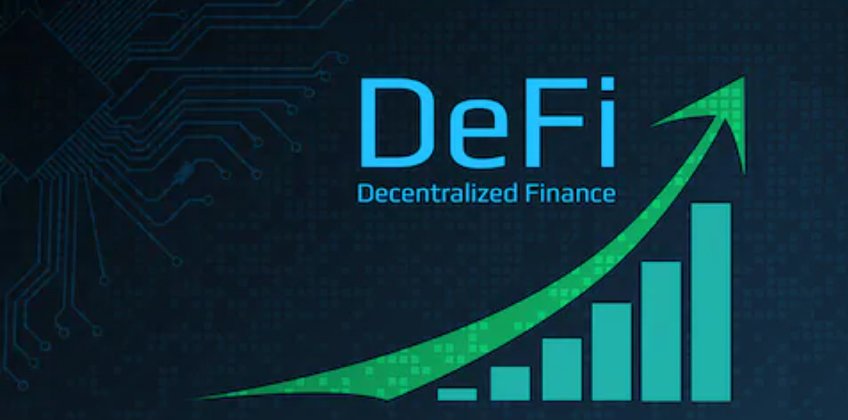
Byzantine Fault Tolerance (BFT)
Byzantine Fault Tolerance is a property of a system to be able to withstand failures in which different components of a system are unable to reach an agreement that is essential for it to function. This means that a BFT system can continue to function even if some of the parts of the system (nodes) fail or act maliciously.
Call (option)
A call option is a contract that gives the owner the right, but not the obligation, to buy a specified quantity of an underlying asset at a specified price within a specified time. In this way, the owner of the call option will benefit when the price of the underlying asset increases.
CDP (Collateralized Debt Position)
A CDP is an instrument developed by MakerDao, in which a stable cryptocurrency (Dai) is minted, contracting a debt backed by collateral (collateral) denominated in ETH. The Dai that is minted must be backed by an amount of ETH that has a value 150% greater than the Dai minted, in the event that this collateralization rate is lower, due to a fall in the price of ETH the contracted debt position is liquidated and the owner of the CDP will lose much or all of the ETH deposited as collateral.
CEX (Centralized Exchange)
Centralized exchanges are online platforms used to buy and sell cryptocurrencies. The idea of centralization refers to the use of an intermediary or third party to assist with transactions. Both buyers and sellers rely on this intermediary to manage their assets.
Private Key
A private key is a sophisticated form of cryptography that allows a user to access their cryptocurrencies, it consists of a series of alphanumeric characters whose composition helps protect a user from theft and unauthorized access to funds as it is extremely difficult to crack. Any user holding cryptocurrencies is given a public address and a private key to send and receive coins or tokens. The public address is where funds are deposited and received. But even if the user has tokens deposited at their address, they will not be able to withdraw them without the private key. The public key is created from the private key through a very complicated mathematical algorithm. However, it is almost impossible to reverse the process by generating a private key from a public key.
Public Key
The public key is a long string of alphanumeric characters cryptographically connected to a cryptocurrency public address which serves as a user account identifier to which funds can be deposited. The public address is a hashed version of the public key. Because the public key is composed of an extremely long string of numbers, it is compressed and shortened to form the public address.
Collateral
Collateral is any asset of value used to secure a loan. This collateral minimizes risk for lenders since if a borrower defaults on the loan, the lender can appropriate the collateral and sell it to recoup its losses.
Transaction fee
Transaction fees are amounts denominated in different cryptocurrencies that are charged for the exchange (buying/selling) of cryptocurrencies. They are charged on both centralized and decentralized exchanges, as well as on platforms that use liquidity pools.
Protocol fee – for example, the one charged by 0x or kyber.
Cryptoasset (cryptoasset)
Cryptoassets, are a type of fungible or non-fungible virtual tokens that reside on a blockchain and represent an asset or utility.
Cryptocurrency
A cryptocurrency is a standard currency used to make or receive payments using a blockchain, with Bitcoin being the most popular cryptocurrency.
Cross-chain swaps
Cross-chain swaps are exchanges between crypto assets residing on different blockchains. such as a token residing on the Ethereum blockchain and another residing on the EOS blockchain.
DAPP (Decentralized Application)
Decentralized applications (dApps) are digital applications or programs that reside and run on a blockchain or P2P network rather than on a single computer, by existing and running on a decentralized network they are beyond the reach and control of a central authority.
DAO (Decentralized Autonomous Organization)
A decentralized autonomous organization is an organization that is not under the control of a single, central command and is largely automated to facilitate decision-making by all those within it. A DAO exists autonomously but also relies heavily on hiring people to perform certain tasks that are not possible to automate. in the words of Vitalik Buterin “Automation in the middle, humans on the sides”.
DeFi (Decentralized Finance)
Decentralized finance refers to an ecosystem of financial applications built on blockchain networks, and therefore operating in open source, non-permission, public, and therefore fully transparent.
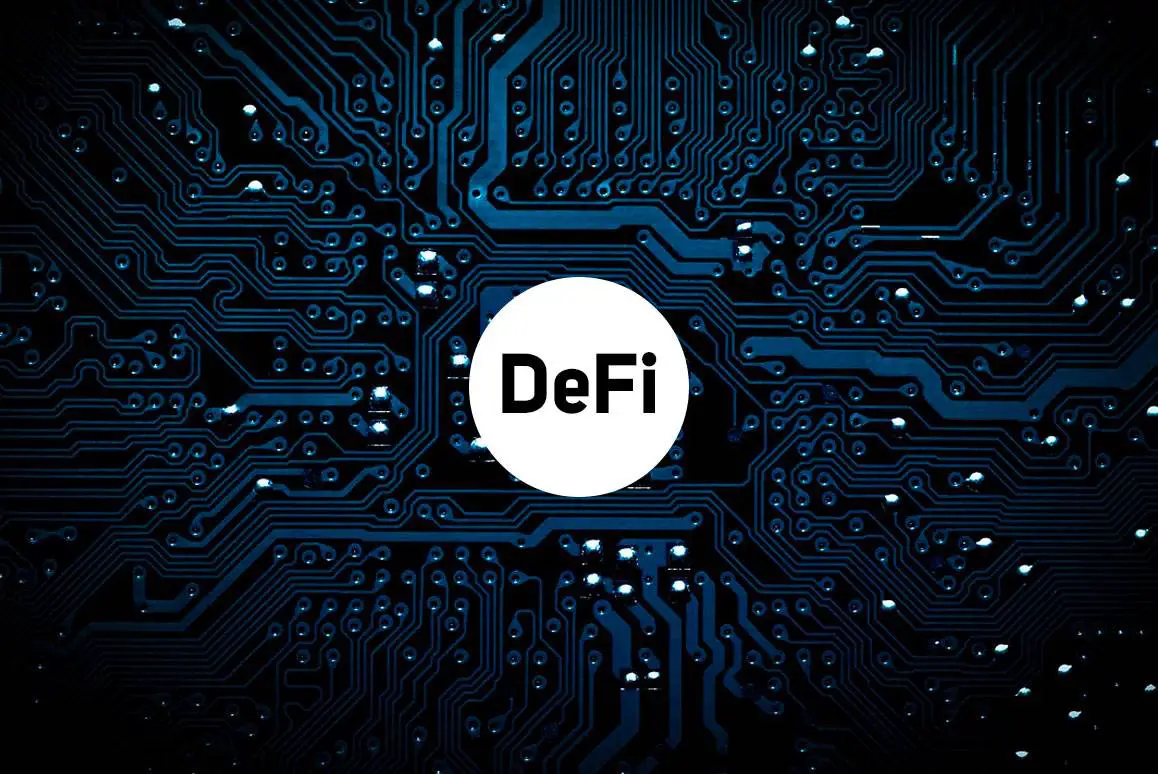
Financial derivative
A financial derivative is a financial asset whose value is derived from the behavior of another asset, called the underlying asset, which is the asset that generates it. This underlying asset can be of many kinds such as commodities, indices, equities, interest rates, etc… the different types of derivatives are swaps, futures, forwards and options.
DEX (Decentralized Exchange)
A DEX is a platform that allows the exchange of cryptocurrencies and operates in a decentralized manner, i.e. without a central authority. DEXs reduce the risk of theft by hacking since users do not need to deposit their crypto assets on the platform and also offer greater anonymity to their users than centralized exchanges, as they implement requirements to their clients.
Public Address
The public address is where funds are deposited and received. The public address is like a bank account number. The sender needs the number to be able to send the funds to the recipient, who can then spend it or withdraw it with his private key.
Double spending
With digital currencies, there is a risk that the holder of some coins can make a digital copy and send it elsewhere while retaining the original. This risk is high because digital information can be reproduced with relative ease by people who have a deep understanding of how a blockchain works and are therefore able to manipulate it.
DPoS (Delegated Proof of Stake)
It is a consensus algorithm developed to secure a blockchain by guaranteeing the representation of transactions within it, and which allows for high scalability. it was created by Daniel Larimer in 2014 and works through an electoral process, in which active users of the DPoS-based blockchain vote to choose “witnesses” and “delegates” by depositing their tokens in the name of their candidate. (those tokens are not spent but represent the stakeholder’s position and remain their property). The tasks of tokens and delegates may differ depending on the blockchain, in some cases, one role may absorb the functions of the other, or even eliminate it.
DSR (Dai Savings Rate)
The Dai Savings Rate, an interest rate that applies to all Dai deposited in a particular smart contract. This interest rate is paid from the funds generated by stability fees and its rate is also decided by vote through MakerDAO.
EIP (Ethereum improvement proposal)
Refers to improvement proposals for Ethereum, which are used to introduce features or any updates to the Ethereum network. EIPs are similar to design / technical documents with details about the proposal in question and the steps that need to be taken to implement it.
EMA
The Exponential Moving Average is an indicator used in essential trading to assess trends in the markets. It is obtained by observing the most recent prices and calculating their average. This calculation favors the most recent prices by giving them greater weight and reducing exponentially as one moves backward in time.
Minimum necessary issuance
Minimum necessary issuance refers to Ethereum’s monetary policy, which aims to achieve the highest security in the network at the lowest cost. The strategy followed by Ethereum works by decreasing the issuance of new coins only to the minimum amount necessary to cover the rewards of each block. Ethereum’s issuance is not limited to a fixed number like that of BTC, its overall monetary mass can grow indefinitely but following this guideline, i.e. that this increase is the minimum necessary to ensure the security of the network.
ENS (Ethereum Name Service)
The Ethereum Name Service (ENS) is a search system that links information to a name. It works similarly to the Internet’s DNS system, helping users find websites through names instead of numbers. ENS is not designed to replace DNS, but to work alongside it.
ERC20
ERC20 is the technical standard used by all smart contracts on the Ethereum network for token implementation. The ERC20 standard establishes a common list of rules that all Ethereum tokens must adhere to. This allows developers of all types to accurately predict how new tokens will function within the Ethereum network.
ERC721
ERC-721 is a free and open standard used by smart contracts on the Ethereum network that describes how to build non-fungible tokens. While most tokens are fungible (each token is the same as every other token), ERC-721 tokens are unique, allowing them to become collectible.
ERC1155
ERC115 is a standard interface for Ethereum network smart contracts that manage multiple token types. This single contract allows the creation of any combination of fungible tokens, non-fungible tokens or other configurations (e.g. semi-fungible tokens). It was created by the Korean platform Enjin.
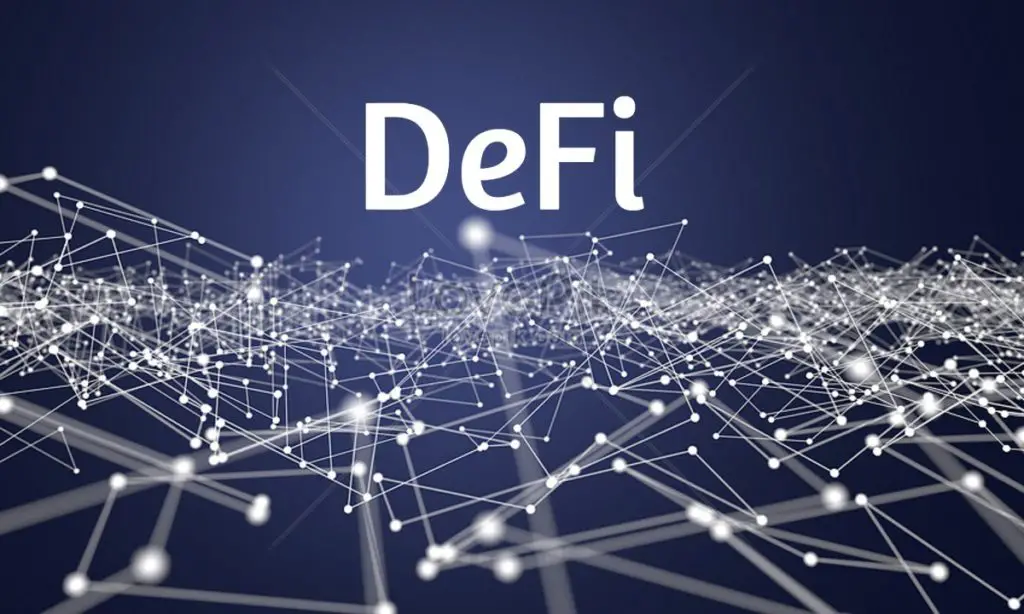
ETF (Exchange Traded Fund)
An exchange-traded fund (ETF) is a diversified pool of assets (such as a mutual fund) that is publicly traded (like a stock). ETFs can hold all types of investments, including stocks, commodities or bonds; they typically have lower management fees than funds and costs are easy to calculate and also instantly provide a source of exposure to the performance of different securities.
EVM (Ethereum Virtual Machine)
The Ethereum Virtual Machine (EVM) is an integral part of Ethereum’s inner workings. It is software embedded in each Ethereum node responsible for executing the bytecode of smart contracts. Contracts are generally written in higher-level languages, such as Solidity, and then compiled into bytecode so that the EVM can read them. EVM is focused on providing security and running trustless code on computers around the world.
Fiat money
Fiar money is a government-issued currency that is not backed by any material asset or promise of payment by the issuing entity. The value of fiat money resides solely in the trust of the community that uses it. Most modern paper currencies, such as the U.S. dollar or the euro, are fiat currencies.
Flash Loans
This application allows you to take a loan instantly, without placing any collateral as security for the loan. The loan must be used and repaid in the same transaction, otherwise, the loan is not made and all actions executed up to that point are reversed. This is done to ensure the security of the loan reserve funds. This utility is unique to the Aave protocol.
Seed phrase
A list of words that store all the information needed to retrieve funds deposited in a cryptocurrency wallet. The wallet software will usually generate a seed phrase and instruct the user to write it down on a piece of paper. If the user’s computer crashes or their hard drive crashes, they can re-download the wallet and use the paper backup to retrieve their bitcoins.
Funding rate
In perpetual swaps, the funding rate is a small fee paid by one side of the contract to the other (e.g., Longs pay Shorts or vice versa). Its purpose is to encourage the price of the perpetual futures contract to stay close to the underlying index price.
Futures
A futures contract, commonly known as “futures,” is a contract between two parties who agree, at a set future date and at a set price, to exchange an asset, called the underlying asset, which may be physical, financial, real estate or commodity. Futures are a type of financial derivative and can be traded on the stock exchange.
Gas
On the ethereum blockchain, gas refers to the cost required to conduct a transaction on the network. gas is used to allocate resources to the ethereum virtual machine (EVM) so that decentralized applications, such as smart contracts, can securely self-execute. Miners set the price of gas and can refuse to process a transaction if it does not meet their price threshold. Gas prices are quoted in gwei, with a value of 0.000000001 ether. Having a separate unit allows a distinction to be maintained between the actual valuation of the cryptocurrency and the computational cost.
Halving
Halving is an event specific to the Bitcoin blockchain that happens every 210,000 mined blocks, i.e. roughly every 4 years. Halving is a halving of the reward for processing transactions on the Bitcoin network. This event also halves the Bitcoin inflation rate and the rate at which new Bitcoins enter circulation.
Hard Fork
A hard fork is a radical change in a blockchain’s protocol that makes previously invalid blocks and transactions valid, or vice versa. A hard fork requires all nodes or users to upgrade to the latest version of the protocol software. This can happen to correct major security risks found in previous versions, add new functionality, or roll back transactions.
Hardware wallet
Hardware wallets are physical devices designed to store cryptocurrencies as securely as possible, operate without an internet connection, and allow private keys to be protected and securely stored inside them.
Hash
The word hash is used in the computer world to describe an encrypted string of text created by a unique cryptographic function known as a hash function. this function is capable of summarizing a large amount of data into a much smaller, unrepeatable string of a fixed length, hence also known as digest functions.
Hash rate
Hash rate can be defined as the speed at which a given piece of mining equipment operates. Cryptographic mining involves finding blocks through complex calculations. Blocks are like mathematical puzzles. A mining rig has to make thousands or even millions of guesses per second to find the correct answers to solve a block. The more hashing power in the network, the greater security and overall resistance to attack.
Holder
A holder is a person who has invested in any asset and whose investment strategy is to hold on to it for the long term in order to see his profits increase as the asset appreciates in value over time.
ICO (Initial Coin Offering)
ICO is an acronym that stands for Initial Coin Offering, it is a financing mechanism used by new projects in the blockchain ecosystem. In an ICO, cryptocurrencies are sold in the form of “tokens” to speculators and investors in exchange for traditional money or other cryptocurrencies such as Bitcoin or Ethereum to raise funds, which will be used to develop the project. ICO participants acquire tokens with the anticipation that over time and with the development of the project they will increase in value.
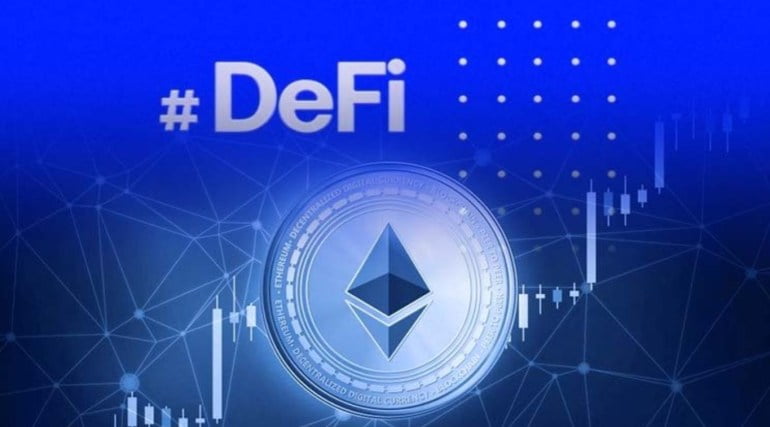
IEO (Initial Exchange Offering)
An Initial exchange Offering (IEO) is a token sale supervised by a cryptocurrency exchange. IEOs are available exclusively to users of the exchange, although some IEOs may be launched on multiple exchanges. Like ICOs, IEOs allow investors to obtain new cryptocurrencies (or tokens) while the projects issuing the tokens raise funds for their development.
IPFS (Interplanetary File System)
It is a protocol and network designed to create a p2p (peer-to-peer) method for storing and sharing hypermedia in a decentralized file system. This system is designed to make the web faster, safer, and more open. The IPFS was initially designed by Juan Benet and is now an open-source project developed with the help of the community.
KYC (Know Your Customer)
Know Your Customer refers to the steps taken by a financial institution (or company) to establish the identity of the customer, to understand the nature of their activities, to verify that the source of their funds is legitimate, and to assess the money laundering risks associated with that customer.
Layer 2
Layer 2 refers to a protocol that is built on top of an existing blockchain system (base layer). The main objective of these protocols is to solve the transaction speed and scaling difficulties faced by major cryptocurrency networks.
Lending
It is a financial practice involving two types of actors with opposite objectives, borrowers and lenders, borrowers use cryptocurrencies they own as collateral to obtain a loan of fiat currency, stable coins, or any other cryptocurrency, while lenders deposit their idle funds so that they can be lent to the former and thus receive a portion of the interest paid by borrowers.
Lightning Network
Lightning Network consists of a transfer network operating off-chain (outside the blockchain) that is being built on top of the Bitcoin blockchain. The system operates on a peer-to-peer (P2P) level and its ease of use is based on the creation of so-called two-way payment channels, through which users can seamlessly conduct cryptocurrency transactions. It was created as an off-chain solution to the scalability problem faced by the Bitcoin blockchain, but the concept can be applied to other cryptocurrencies as well. As a concept, it was created by Joseph Poon and Thaddeus Dryja in 2015.
Liquidity Pool (LP)
A liquidity pool is a pool of tokens deposited in a smart contract that can be exchanged with each other through Automated Market Makers that automatically match traders’ buy and sell orders based on predefined parameters. Anyone acting as a liquidity provider simply deposits their assets into the fund and the smart contract takes care of the pricing.
MACD (Moving Average Convergence-divergence)
The moving average convergence-divergence (MACD) is a momentum indicator that follows the price trend of a security and shows the relationship between two moving averages, one 26-period, and one 12-period. MACD is an important tool for technical analysis and gives a buy signal when the 12-period line crosses above the 26-period line or a sell signal when the reverse occurs. The speed of the crossover is also taken as a signal that the market is overbought or oversold.
Market Cap
Market capitalization refers to the value of a company as determined by the stock market, and is defined as the total market value of all outstanding shares. To calculate a company’s market capitalization, the number of shares outstanding is multiplied by the current market value of each share.
MCD (Multi Collateral Dai)
Dai is a stable coin generated by the MakerDao platform and is minted as a loan upon deposit of collateral. Single collateral Dai is a Dai that can only be minted by depositing ETH as collateral, while MCD allows the issuance of Dai using multiple coins as collateral.
Predictive markets
They are speculative markets created for the purpose of making predictions. Assets are created whose ultimate value is tied to the possibility of a particular event occurring. Market prices at a given time can be interpreted as predictions of the probability of the event (e.g. the election of the president of a country) or the expected value of a parameter (e.g. the annual inflation of a given currency).
Meta-transaction
A meta-transaction is a transaction that takes place within a blockchain for which there is no fee to pay. This is done thanks to what is known as a relayer that acts as a connector between the client and the blockchain and is responsible for paying the transaction fees. The relayer can be a tool, a service, or even a person who is willing to pay the gas fee. Once the transaction reaches the relayer and the fee is paid it is sent to the receiving address.
NFT (Non Fungible Token)
A non-fungible token is a crypto asset that is not exchangeable for another since it is unique and unrepeatable. This allows not only to own it but also to exchange it freely in any market. Thanks to the blockchain we can own and exchange digital assets without generating copies and therefore maintaining their originality.
Permissionless
Permissionless is a term used to describe a public blockchain, i.e. a blockchain that does not require permission to be part of it or to contribute to its maintenance. Therefore anyone can be part of a permissionless blockchain.
Off-chain
Off-chain is a term used to designate those operations (transactions, commission payments, etc…) that happen outside the blockchain.
On-chain
On-chain is a term used to designate those operations (transactions, commission payments, etc…) that happen inside the blockchain.
Elliott waves
Elliott waves are a technical analysis indicator developed from the discoveries of Ralph Nelson Elliott who found that stock markets do not behave randomly, but tend to follow certain laws based on Fibonacci ratios, and on the idea that upward and downward movements have repetitive sequences called waves.
Options
Options are financial derivatives that give buyers the right, but not the obligation, to buy or sell an underlying asset at an agreed price and date. Options in which a sale is agreed are called “put options”, while options in which a purchase is agreed are called “call options”.
Oracle
An oracle is a tool that enables blockchains and their smart contracts to interact with external data. Since blockchains are unidirectional and deterministic, oracles allow for a connection between events happening outside the chain and those happening inside. There are oracles that incorporate information from outside to inside the chain (inbound oracles), while others do the opposite (outbound oracles).
Order book
An order book is a digital list of buy and sell orders for a specific financial instrument or asset organized by price level. Virtually all exchanges use them for all types of assets such as stocks, bonds, currencies, and cryptocurrencies. These lists help improve market transparency by providing information on price, availability, market depth, and who initiates trades. There are three parts to an order book: buy orders, sell orders, and order history.
OCO Order (One cancels the other)
It is an order that allows placing two orders at the same time, as soon as one of them is partially executed the other one will be canceled automatically. If one of the two orders is canceled, the other will automatically be canceled as well.
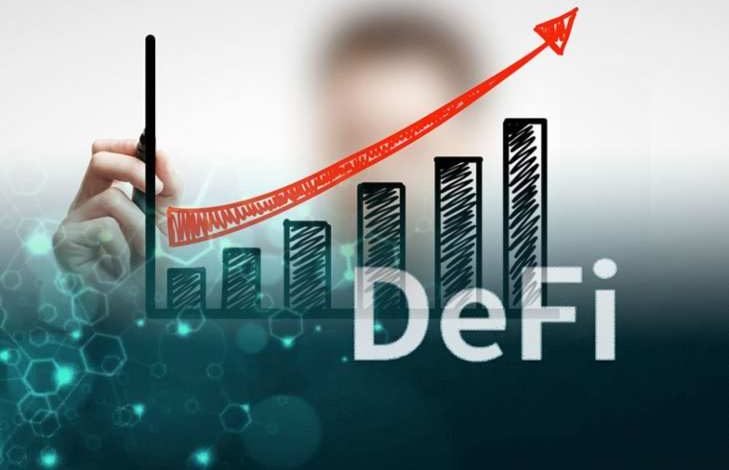
Market order
A market order is the most basic type of order found on an exchange. It is an order to buy or sell immediately and therefore at the current price.
Limit order
A limit order is a type of order to buy or sell an asset at a specific price or better. In the case of a buy order, the order will be executed only at the limit price or lower, while if it is a sell order, the order will be executed only at the limit price or higher. This allows traders to better control the price of their trades. While the price is guaranteed, order fulfillment is not, as orders will not be executed unless the price of the asset meets the order’s requirements.
Stop-Limit Order
Stop-limit orders are orders that are composed of two specified prices. Stop order which is the start of the specified target price for the trade, and the limit order is the specific price at which the trade will be executed. These orders allow traders to have more control over their trades.
OTC (Over the Counter)
An over-the-counter (OTC) market is a decentralized market in which participants exchange shares, commodities, currencies, or other instruments directly between two parties and without the intervention of a broker or exchange.
Peer to Peer (P2P)
Peer to peer (P2P) refers to any decentralized platform through which two people interact directly with each other, without the intermediation of a third party. A P2P platform can provide services such as search, selection, rating, as well as an information exchange of any kind (e.g. BitTorrent).
Perpetual swaps
Perpetual swaps are essentially a futures contract with no expiration date. When traders have an open perpetual swap, they may have to pay financing fees.
PoW (Proof of Work)
Proof of Work, or PoW, is the consensus algorithm that among other applications is used in a Blockchain. In Blockchain, this algorithm is used to confirm transactions and produce new blocks for the chain. A blockchain collects all transactions in blocks. However, care must be taken to confirm transactions and organize the blocks. This responsibility falls to special nodes called miners, and a process is called mining. In the mining process, miners compete with each other to solve complex computational puzzles. These puzzles are difficult to solve, but when they are solved, the solutions can be quickly verified. When a miner finds the solution to a new block, he or she can transmit that block to the network. All other miners will verify that the solution is correct which will lead to the block is confirmed.
PoS (Proof of Stake)
Proof of Stake (PoS) is a distributed consensus protocol for distributed networks in which the miner’s power is proportional to the number of coins he owns, thus avoiding that trust is given by the amount of work invested, in this way, instead of using energy to answer the puzzles of a PoW, a PoS miner is limited to extract a percentage of the transactions that reflects his ownership stake. For example, a miner who owns 3% of the available cryptocurrency, in theory, can mine only 3% of the blocks. This system is based on the assumption that those who own the most units of a PoS-based coin are particularly interested in the survival and smooth functioning of the network that gives value to those coins and is, therefore, best placed to bear the responsibility of protecting the system from possible attacks.
PoA (Proof of Authority)
Proof of Authority (PoA) is a consensus algorithm used in blockchains. PoA is a mixed approach that combines the other two commonly used algorithms, proof of work (PoW) and proof of stake (PoS). In PoA, the mining process starts in PoW mode, in which several miners compete with each other for the most computing power to find a new block. When a new block is found (mined), the system switches to PoS, once the new block is found it will contain only a header and the miner’s reward address. Based on the header details, a new random set of validators is selected from the blockchain network who must validate or sign the new block. The more cryptocurrencies a validator owns, the more likely they are to be selected as a signer.
Reserve of value
A store of value is an asset that holds its value without depreciating. Gold and other precious metals are good stores of value because their lifespan is essentially perpetual.
Fibonacci retracements
A technical analysis method for determining support and resistance levels. Its name comes from the use of the Fibonacci sequence. Fibonacci retracement is based on the idea that markets will retrace following predictable parameters, after which they will continue to move in the original direction. These points at which the price returns to its original trend are determined by the Fibonacci sequence
ROI (Return on Investment)
Return on investment (ROI) is a measure of performance used to evaluate the efficiency of an investment or to compare the efficiency of several different investments. The formula for calculating it is as follows:
Present value of the investment – the cost of the investment/cost of the investment.
RSI (Relative Strength Index)
The Relative Strength Index (RSI) is an indicator used in technical analysis that measures the magnitude of recent price changes to assess overbought or oversold conditions in the price of a stock or other asset.
SAFT (Simple Agreement on Future Tokens)
A Simple Agreement on Future Tokens (SAFT) is an investment contract offered by cryptocurrency developers to accredited investors. It is considered a security and therefore must comply with current regulations. Developers use funds from the sale of SAFTs to develop the network and technology necessary to create a functional token and then supply these tokens to investors with the expectation that there will be a market to sell those tokens.
Satoshi
The satoshi is the smallest unit of the Bitcoin cryptocurrency. It is named after Satoshi Nakamoto, the creator of the protocol used by the Bitcoin cryptocurrency.
SCD (Single Collateral Dai)
A single collateral Dai, is a stable coin that is minted through a secured debt process in the MakerDAo protocol, in this case, the collateral needed to mint SCD is denominated exclusively in ETH, the Ethereum cryptocurrency.
SEC (Securities & Exchange Commission)
The Securities and Exchange Commission (SEC) is a U.S. government oversight agency responsible for regulating the securities markets and protecting investors. The SEC was established by the passage of the U.S. Securities Act of 1933 and the Securities and Exchange Act of 1934, largely in response to the stock market crash of 1929 that led to the Great Depression. The SEC can bring civil actions against violators of the law and also works with the Department of Justice in criminal cases.
Security token
Security tokens are essentially digital liquid contracts that represent fractions of any asset that already has value, such as real estate, an automobile, or corporate stock. Their use implies that holders own a stake in the asset and can expect it to be held on the blockchain.
Slippage
Slippage refers to the difference between the expected price of a trade and the price at which the trade is executed. When an order is executed, the security is bought or sold at the most favorable price offered. This may produce more favorable, equal, or less favorable results than the expected execution price. The final execution price versus the expected execution price can be classified as positive slippage, no slippage, and/or negative slippage.
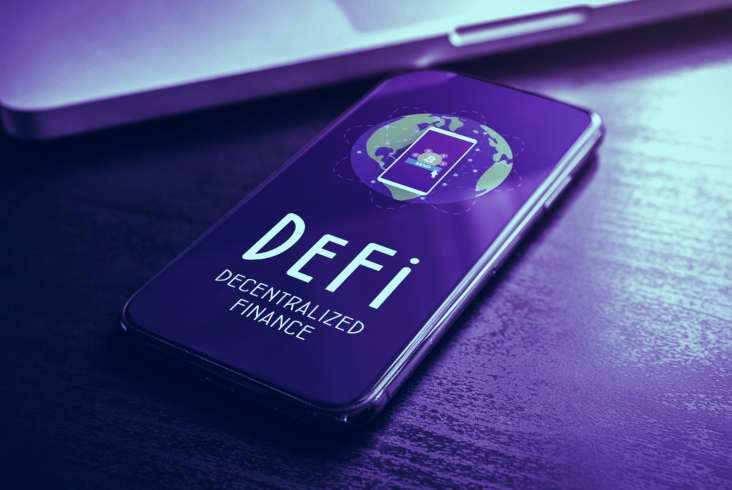
SMA (Simple Moving Average)
The SMA is an indicator used in technical analysis that can help determine whether the price of an asset will continue or reverse an uptrend or downtrend. The SMA calculates the average of a selected price range, usually closing prices, times the number of periods in that range.
Smart contract
A smart contract is a self-executing contract with the terms of the agreement between the two parties written directly in lines of code. The code and the agreements contained therein exist on a decentralized, distributed blockchain network. The code controls execution and transactions are traceable and irreversible.
SNARKs (Succinct Non-Interactive Argument of Knowledge)
It is a method used in cryptography that emerges as a variant of zero-knowledge proofs. It is a system that allows proving the possession of certain information, (e.g. a secret key), without revealing that information, and without any interaction between the tester and the verifier.
Soft Fork
A soft fork is a change in the software protocol where only previously validated transactions/blocks are invalidated. In a soft fork, the old nodes can recognize the new blocks as valid, and therefore it is backward compatible. This type of fork only requires the majority of miners to upgrade to comply with the new rules, unlike a hard fork which requires all nodes to upgrade and agree to the new version.
Stability fee
The stability fee is a concept used on the MakerDao platform that refers to the interest that a user pays when closing a PDC voluntarily, i.e. the interest on the loan of their stable coin Dai, upon deposit of collateral.
Stablecoin
Stablecoins are cryptocurrencies that attempt to maintain a stable price and link their market value to some external reference such as the US dollar or to the price of a commodity such as gold. The mechanism by which they stabilize their price works through collateralization (backing) or through algorithmic buying and selling mechanisms of the reference asset or its derivatives.
STARKs (Scalable Transparent Arguments of Knowledge)
It is a type of cryptographic proof technology that allows users to share validated data or perform calculations with a third party without the data or calculation being disclosed to the third party, also known as zero-knowledge proof, in a manner that is publicly verifiable. Prior to the creation of ZK-STARK, ZK-SNARKs were used to create ZK-proof systems but required a trusted party or parties to initially configure the ZK-proof system which introduced the vulnerability of those trusted parties compromising the privacy of the entire system. ZK-STARKs improve on this technology by eliminating the need for trusted configuration.
STO (Security Token Offering)
A Security Token Offering is a funding mechanism used by new projects in the blockchain ecosystem, similar to an ICO. In an STO an investor receives a cryptocurrency or token that represents their investment. But unlike an ICO, a security token represents an investment contract on an underlying investment asset, such as stocks, bonds, funds, etc.
SWAP
Swap literally means to exchange or swap, and is a term that alludes to the ability for users to quickly and easily exchange one crypto asset for another, without having to use fiat currency as an intermediary and without leaving the blockchain.

Token
Token literally means token or token. In the Blockchain ecosystem, any asset that is digitally transferable between two people is called a token. Tokens are issued on a blockchain, and depending on the properties assigned to them, they have different classifications and uses, (e.g. utility tokens, or security tokens)
TPS (Transactions per Second)
Transactions per second (TPS) is a term generally used in the blockchain ecosystem. It refers to the number of transactions completed every second on a blockchain. The higher the number of transactions per second, the faster transactions are executed, approved, and confirmed.
Trading
Trading literally means trading or buying and selling. it is a basic economic concept involving the buying and selling of goods and services, with compensation paid by a buyer to a seller, or the exchange of goods or services between parties. In the crypto ecosystem, it usually refers to the buying and selling of tokens, or cryptocurrencies on an exchange platform.
Margin trading
It is a type of trading in which the user borrows money to perform a trading operation for amounts greater than he can afford (that is why he needs a loan), the loan is usually obtained from a broker or a bank. The practice involves buying an asset where the buyer pays only a percentage of the value of the asset and takes the rest of the loan from the bank or broker. The broker acts as the lender and the securities in the investor’s account act as collateral. The leverage provided by this type of transaction will tend to amplify both gains and losses.
Atomic transaction
An atomic transaction is an indivisible and irreducible series of transactions that take place in a database in such a way that either everything happens or nothing happens. an example would be flash loans, which are transactions in which all steps are executed in the same block transaction or all steps are reversed.
Transaction ID
The transaction ID or TX ID is defined as a string of letters and numbers used to identify a cryptocurrency exchange between two parties. Each transaction has a unique ID. Because blockchains are public data, there are many websites that allow you to explore the data. These websites are known as blockchain explorers. By copying and pasting the ID of a transaction into a blockchain explorer one can easily find out the status of the transaction.
Trustless
Trustless literally means “without trust,” and refers to a system in which the participants involved do not need to know or trust each other or a third party for the system to function.
Utility Token
A utility token is a digital asset that is used to be able to consume some of the products and/or services of a blockchain platform. Utility tokens unlike security tokens and shares do not provide ownership rights to a part of the project, therefore it is an approach that helps a project to obtain funding without losing its independence, as most of them are used in ICOs.
Unit of account
Essentially, a unit of account is a measure of value. It can be related to fiat currency, cryptocurrencies, or any other instrument that allows us to compare the value of things. It is a term used to describe one of the main functions that money has, the ability to measure the value of a particular property, good, or service.
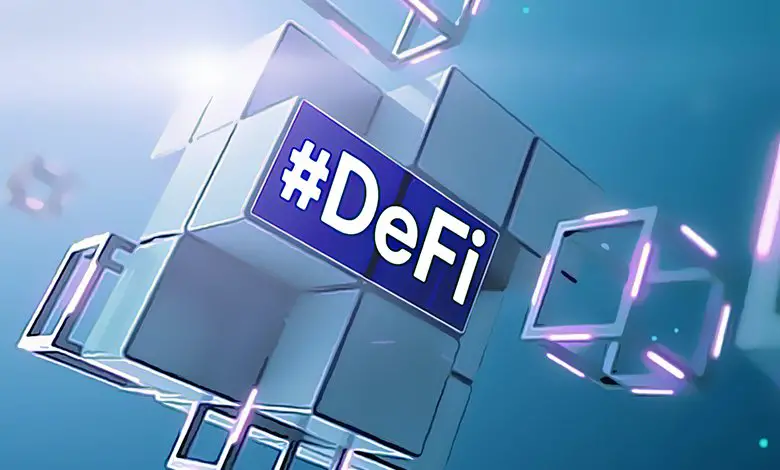
Wallet
A crypto wallet is a tool that allows users to interact with a blockchain. They are necessary to send and receive any type of cryptocurrency, and can also be used to generate new blockchain addresses. Cryptocurrency wallets do not actually store funds, as cryptocurrencies are simply data that are part of a blockchain system and wallets serve as a means to access them. There are three main types of cryptocurrency wallets: software, hardware, and paper wallets.
Wei
A Wei is the smallest part into which an ether (ETH), can be divided. 1 ETH is equal to 1 x 10 raised to 18 Weis.
Whitepaper
A whitepaper is an informational document, usually issued by a company or non-profit organization, to promote or highlight the features of a product or service. They are often also used to attract or persuade potential customers to learn about or purchase a particular product, service, technology, or methodology.
Zero-knowledge proof
Zero-Knowledge Proof is a cryptographic verification protocol between a prover and a verifier that allows a prover to prove to a verifier that he or she has knowledge of a certain piece of information (such as the solution to a mathematical equation), without revealing the information itself. It is typically used to provide higher levels of privacy and security.

